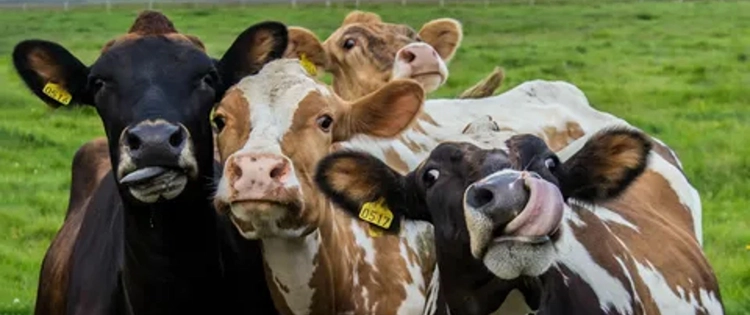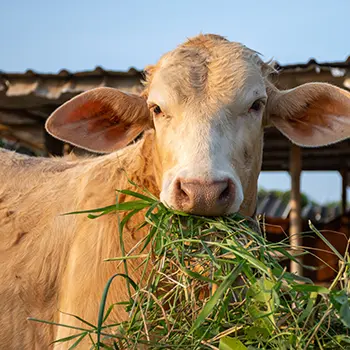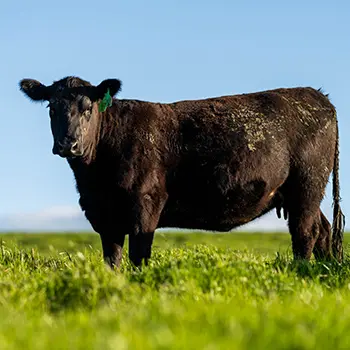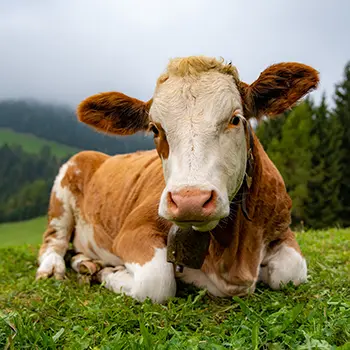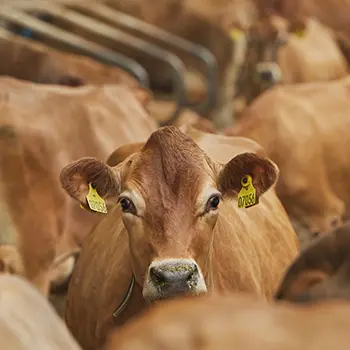Raising cows seemed like the next logical step in my homesteading journey but I never thought that there were so many cow raising mistakes.
I’d mastered gardens and chickens, so how hard could it be? Turns out, pretty darn hard. The day I noticed Bessie, my prized Holstein, waddling instead of walking, I realized I’d made my first big mistake: overfeeding.
I’m not alone in my blunders, as most of my homestead buddies attest to this. I’ve learned it all the hard way. So today, I’ll share some cow-raising mistakes that you should avoid.
Infrastructure Issues
One of the biggest blunders new cow owners make is underestimating the importance of proper infrastructure. Here’s what you need to consider:
1. Shelter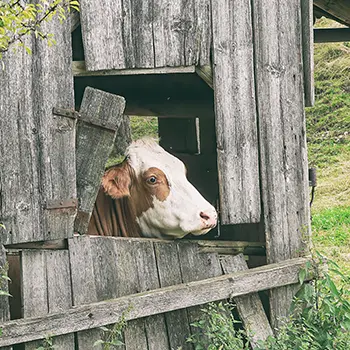
Cows need protection from harsh weather and a place to rest comfortably. A simple lean-to can suffice, but it must be sturdy and well-ventilated. Aim for at least 20-30 square feet per cow in the shelter and ensure proper drainage to keep the area dry and prevent hoof problems.
2. Fencing
Don’t underestimate the escape artist abilities of calves! A three-strand electric fence around the perimeter is often sufficient for adult cows. Consider using a single strand for rotational grazing paddocks.
Regularly check and maintain fences to prevent escapes and injuries.
3. Milking Area
If you’re raising dairy cows, a comfortable milking stall is crucial. Ensure the stanchion is the right height to prevent choking if the cow falls. Place feed buckets lower to mimic natural grazing positions and Use rounded buckets for easy cleaning and to prevent feed from getting stuck in corners.
Not having the right infrastructure in place before you get a cow is a recipe for unnecessary stress.
Nutritional Nightmares
Feeding your cows isn’t as simple as letting them loose in a field. Here are some common nutritional mistakes:
1. Overfeeding
This can lead to obesity, laminitis, decreased milk production, and fertility issues. Adjust feed amounts seasonally and use body condition scoring. Calculate proper feed ratios based on age, weight, and production stage.
Remember, a fat cow is not a healthy cow!
2. Underfeeding
This results in weight loss weakened immune systems, and reproductive problems. Ensure access to high-quality forage (grass or hay) at all times. Supplement with grain or concentrates as needed, especially for lactating cows.
Make sure to consult with a veterinarian or nutritionist to develop a balanced feeding plan.
3. Ignoring Individual Needs
Just like humans, cows have different nutritional requirements based on their life stage and production level. Failing to account for these differences can lead to health issues and reduced productivity.
Cow Type | Special Nutritional Needs |
Lactating cows | Higher energy and protein requirements |
Dry cows | Reduced calorie intake to prevent obesity |
Growing calves | High-quality protein for proper growth |
Pregnant cows | Increased minerals and vitamins |
To cater to individual needs:
- Separate cows into groups based on their nutritional requirements
- Provide targeted supplements for specific needs (e.g., calcium for lactating cows)
- Regularly assess and adjust feeding plans as cows transition between life stages
Breeding Disasters
Breeding cows comes with its own set of challenges. Here are some pitfalls to avoid:
1. Choosing the Wrong Bull
Selecting a bull isn’t just about picking the biggest, baddest bovine on the block. Consider breed compatibility, temperament, genetic health, and desired traits in offspring.
To make the right choice – research reputable breeders in your area or consider artificial insemination for access to a wider range of genetic options. Make sure you look for only bulls with proven performance records.
2. Improper Breeding Timing
Timing is everything when it comes to successful breeding. Ignoring a cow’s natural heat cycle can lead to missed breeding opportunities, extended calving intervals and, decreased overall herd productivity.
To improve your breeding success rate; learn to recognize signs of heat, use heat detection aids like tail paint or pedometers, and keep detailed records of each cow’s breeding cycle.
3. Not Addressing Cow Fertility Issues
Fertility problems can sneak up on even the most attentive homesteader. Watch out for prolonged calving intervals (more than 13 months), difficulty getting pregnant after multiple breeding attempts, and irregular heat cycles.
Don’t hesitate to call in the pros. Schedule regular check-ups with a veterinarian, consider reproductive ultrasounds to diagnose potential issues, and be open to treatments like hormonal therapies if recommended by your vet.
4. Prepare for Calving
Have supplies on hand for potential complications like milk fever. Reduce grass hay and alfalfa pellets before calving to prevent milk fever. Also create a clean, quiet area for calving.
5. Post-Calving Care
Be ready for the sudden influx of milk and the needs of the new calf.
All be on high alert for signs of mastitis or other post-calving issues on your cow. Furthermore, ensure the calf receives colostrum within the first few hours of life.
Herd Management Mistakes
1. Overcrowding
Cramming too many cows into a small space is a recipe for disaster. Overcrowding can lead to increased disease transmission, aggression and stress, reduced milk production, and environmental issues (e.g., soil compaction, manure management problems).
To give your cows the space they need to provide at least 500-600 square feet of pasture per cow, implement a rotational grazing system to maintain pasture health, and ensure adequate shelter space (at least 20-30 square feet per cow).
2. Neglecting Parasite Control
Out of sight, out of mind doesn’t apply to parasites. These tiny troublemakers can cause big problems if left unchecked:
- Internal parasites (e.g., worms): weight loss, decreased milk production, anemia
- External parasites (e.g., lice, mites): skin irritation, stress, reduced growth rates
To keep parasites at bay, implement a regular deworming schedule, practice good pasture management, and conduct fecal egg counts to monitor parasite loads and treatment effectiveness.
3. Overlooking Cow Comfort
A comfortable cow is a productive cow.
Don’t underestimate the importance of proper bedding, which is clean, dry, and sufficient, adequate ventilation in barns or shelters, easy access to clean, fresh water, and protection from extreme weather conditions.
Signs your cows might be uncomfortable are restlessness or frequent shifting while lying down, decreased milk production, and increased susceptibility to illness.
The Mentor Mistake
One of the biggest mistakes new cow owners make is not finding a good mentor. While online forums can be helpful, nothing beats the wisdom of an experienced cow raiser. A mentor can provide practical, hands-on advice tailored to your specific situation and also help you navigate emergencies and make crucial decisions.
Spousal Support Issues
Raising cows is a big commitment that affects the whole family. Make sure your spouse is fully on board before bringing home your first bovine. Discuss the:
- Time commitments: Who will handle daily milking, feeding, and care?
- Financial implications: Budget for feed, veterinary care, and equipment.
- Division of responsibilities: Clear communication prevents resentment.
- And long-term goals: Are you both committed to this lifestyle change?
The Milk Dilemma
New dairy cow owners often underestimate the sheer volume of milk they’ll be dealing with. Be prepared to learn cheese-making and butter-churning skills to preserve excess milk.
You can also explore herd-share options if legal in your area to share the bounty (and costs). Find creative uses for excess milk and develop a network of friends and neighbors who might appreciate fresh milk.
Remember, even the most experienced homesteaders can stumble when it comes to raising cows.
The key is to stay informed and keep learning, be proactive in addressing potential issues, and don’t hesitate to seek professional help when needed.
By avoiding these common mistakes, you’ll be well on your way to building a thriving, productive herd.
Ever encountered any of these challenges in your cow-raising journey? Or, do you have tips to share with fellow homesteaders? Let’s hear your thoughts in the comments section below!
How To Raise Mini Cows For Prepping And SHTF
The Succulent Red Plant That Tastes Like Bacon (Video)
10 Things To Never Feed Your Pigs
Livestock Animals You Should Start Raising For The Upcoming Economic Crisis

